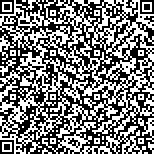| 摘要: |
| 根据分子碰撞理论和粘土表面改性对絮凝作用的影响,进行了粘土-MMH体系絮凝沉降赤潮异弯藻(Heterosigma akashiwo针胞藻)和新月菱形藻(Nitzschia closterium硅藻)的动力学研究。在粘土中加入第二组分MMH(混合金属层状氢氧化物正电溶胶),改变粘土表面电性,并对上述两种藻进行絮凝动力学实验。结果表明,一定颗粒度的粘土对赤潮异弯藻和新月菱形藻的絮凝速率随体系中MMH比例的增大而呈不同程度的提高;对于粘土/MMH比一定的混合体系,絮凝速率随粘土浓度的增大而逐渐提高;另外还考察了pH对粘土-MMH体系絮凝赤潮生物的影响。从理论上分析讨论了以上各种因素的影响原因,证明在粘土表面引入MMH组分是一种有效提高赤潮生物絮凝速率的途径。 |
| 关键词: 粘土-MMH体系 赤潮生物 絮凝速率 |
| DOI:10.11693/hyhz200004015015 |
| 分类号: |
| 基金项目:国家自然科学基金资助,49406072号;国家自然科学基金“九五”重大项目资助,39790110号 |
附件 |
|
| STUDY ON THE KINETICS OF CLAY-MMH SYSTEM ON COAGULATION OF RED TIDE ORGANISMS |
|
SONG Xiu-xian, YU Zhi-ming, SUN Xiao-xia
|
|
Institute of Oceanology, The Chinese Academy of Sciences, Qingdao266071
|
| Abstract: |
| Based on a theoretical model of molecular collision and the effect of surface modification of clay on coagulation, the impact of clay-MMH system on the kinetics of coagulating red tide organisms (Heterosigma akashiwo and Nitzschia closterium) was studied. The surface charge of clay was modified after adding the second component MMH (Mixed Metal Layered Hydroxide). Experiments of kinetics on coagulating the two red tide organisms were conducted by using this clay-MMH system. The results show that maximum coagulation rate of H. akashiwo increases with the increase of MMH ratio in clay. For example, when MMH ratio in clay is 100%, the maximum coagulation rate of H. akashiwo is 15.0 times as that of the control group (MMH ratio was zero), 7.5 and 1.5 times as those of the 10% and 20% group, respectively. With the increase MMH ratio in clay, maximum coagulation rate for N. closterium increases significantly compared with the control group, but there is no obvious difference between the groups with various MMH ratios (such as 10%, 20% and 100%). For instance, maximum coagulation rate of the system, in which MMH is 100%, is 10.7 times as that of the control group. However, it is only 1.4 and 1.1 times of the 10% and 20% groups, respectively. The reason is considered to be related to the difference between the species and structure of the algal cells. With regard to certain ratio of clay/MMH system (MMH ratio 20%), the coagulation rate of red tide organisms increases with the increase of clay/MMH concentrations. For instance, when clay/MMH concentration reaches 1.6g/L, maximum coagulation rate of H. akashiwo is 9.2 and 5.9 times as those of the 0.4g/L and 0.8g/L group, respectively. As to N. closterium, when clay/MMH concentration reaches 1.6g/L the maximum coagulation rate is 3.4 and 2.0 times as those of the 0.4 g/L and 0.8 g/L group, respectively. The impact of pH on coagulation rate is also studied. The coagulation rate of N. closterium increases obviously with the increase of Ph. This result agrees with the previous research of Yu Zhi-Ming (1995). Nevertheless, the effect of pH on coagulating H. akashiwo is different. At the beginning of the process, the coagulation rate of the highest pH group (i.e. pH was 10.56) is much lower than those of the 8.98 and 6.85 groups, but increases rapidly after a period; at the same time the lower pH group reach equilibrium. Investigations into the effects of some factors on coagulation rate of red tide organisms indicate that adding MMH in clay is one of the better ways to improve the coagulation rate of red tide organisms in seawater. |
| Key words: Clay-MMH syetem, Red tide organisms, Coagulation rate |
